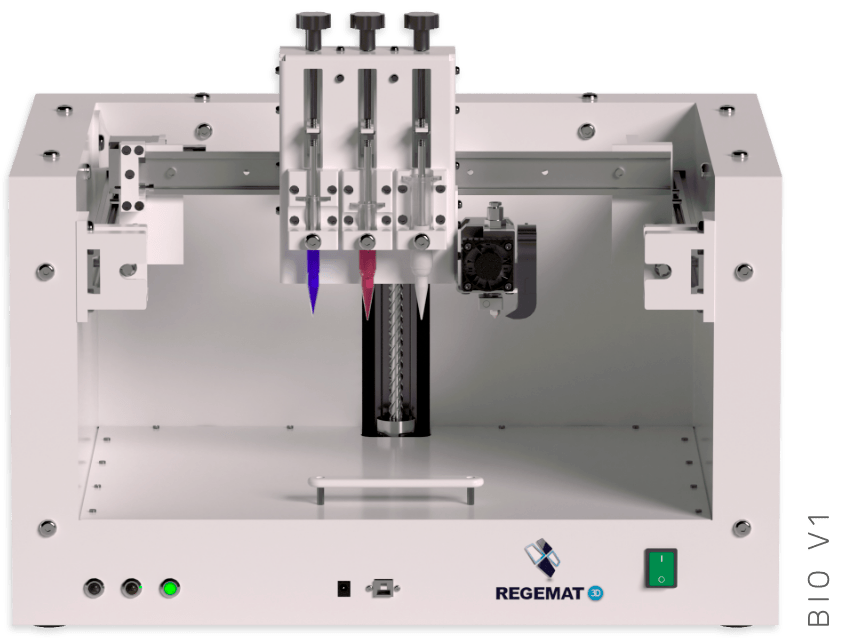

The bioprinting systems of Regemat 3D have been optimized and validated for printing several tissues types (Cartilage, skin, bone, cardiac tissue…) and also to work with different biomaterials (Collagens, nanocellulose, thermoplastics…)
The technology of modular and exchangeable printing head jointly with the thermoplastic extruder both included in all versions facilitate the combination of different materials and printing techniques what adjust to your application.
In Regemat 3D we implement all our systems with the aim of maximum optimizing of the bioprinting process, therefore these are configured for using the technologies FDM, IVF and IPF.
The fused deposition model (FDM) enables the modeling of the scaffold with the purpose of creating complex external structures and a meshed internal structure. In this additive process of manufacturing, a thermoplastic material comes into contact with the hot surface of an extruder, which gradually deposits each layer of the material.
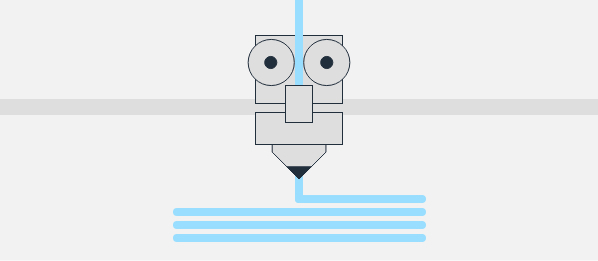
Thanks to the technology of injection pore filling (IPF) we can select specific layers on which to inject cells into the selected pores. This also permits the injection of controlled amounts that can be even different in each layer.
This technology increase and guarantee the cell survival and viability in extreme conditions as in the case of working with thermoplastics in high temperature.
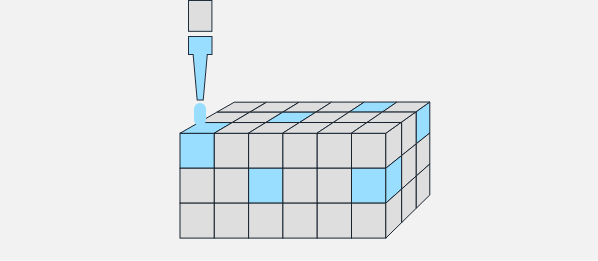
The IVF technology will conduct a complete injection of bioink into the manufactured volume, ensuring the filling of all the layers of the scaffold after printing. With this technology, cellular viability and survival are enhanced and guaranteed in extreme conditions, as occurs in works with thermoplastics at high temperatures.
This technology lets us the filling of volumes working in small areas as in the case of osteochondral injuries.
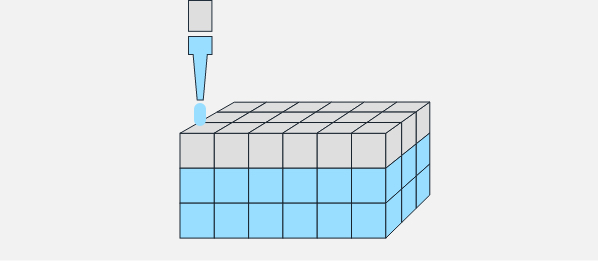
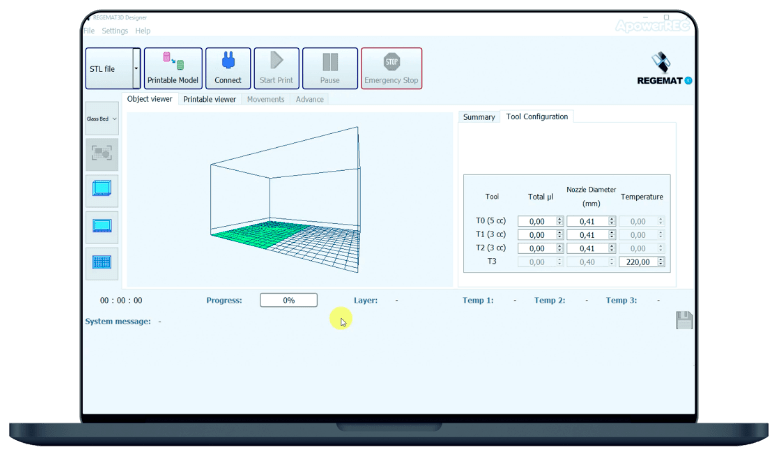
REGEMAT 3D include specific software to configure both the bioprinter and the models to be printed. REGEMAT 3D designer allows to print differents 3D objects simultaneously during the same process, each one configured in an independent way.
The self-development of both the software and the hardware components, let us design customized systems adapted to the specific needs of each project.
Our user-friendly and intuitive software allows both the designing of proper structures and the importation of geometries from STL files. Once the structure is designed or imported, through a preview of the piece we can configure the internal mesh and a wide range of printing parameters.
1. Charge and interactive visualization of STL models
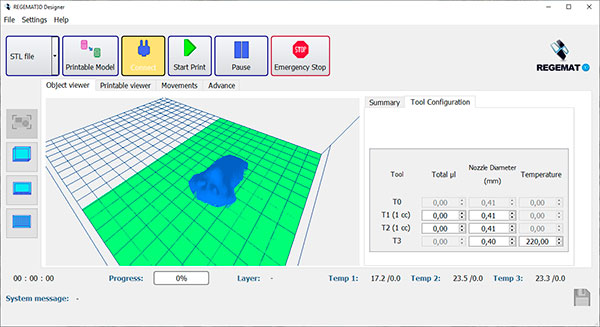
Importing designs previously created in CAD software is possible.
3. Interactive generation and visualization of the printing trajectories by layers
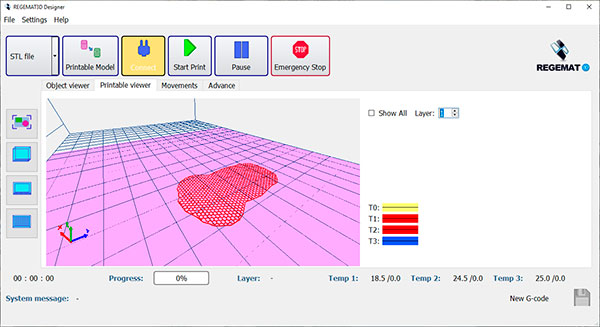
Seeing the printing process is possible, layer by layer.
3. Interactive generation and visualization of the printing trajectories by layers
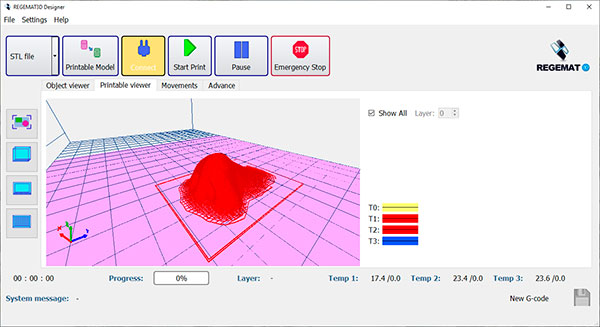
Seeing the printing process is possible, layer by layer.
2. Several parameters configurations in the scaffold

Facilitate the configuration of several parameters: Layer height, poor size, perimeters, infill type, etc.
4. Injections configuration
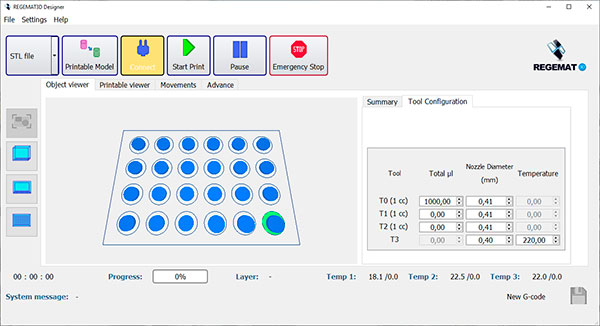
Lets you to choose from different injection options: Point by point, lineal, etc.
1. Charge and interactive visualization of STL models

Importing designs previously created in CAD software is possible.
2. Several parameters configurations in the scaffold

Facilitate the configuration of several parameters: Layer height, poor size, perimeters, infill type, etc.
3. Interactive generation and visualization of the printing trajectories by layers

Seeing the printing process is possible, layer by layer.
3. Interactive generation and visualization of the printing trajectories by layers

Seeing the printing process is possible, layer by layer.
4. Injections configuration

Lets you to choose from different injection options: Point by point, lineal, etc.
One specific application requires specific solutions. Therefore we develop a modular system what allows us to adapt it to the concrete needs of each research in particular.
Our printing head lets you include different syringes modules and tools for any application.
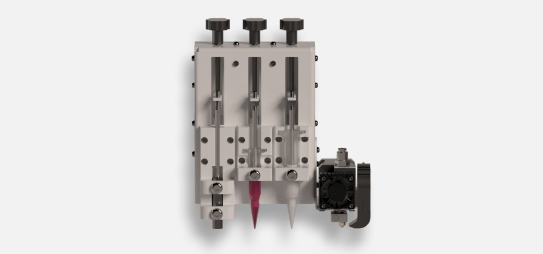
The compact head allows the implementation of four different tools with adjustable movement in X and Y.

The individual head allows to incorpórate 2 tools with adjustable independent movement on X, Y, Z axis, includes one double thermoplastic extruder to print 2 materials simultanely.
We design adaptable components to the extrusión tools, in accordance with the nature and characteristics of the materials. The module could be adaptable to the characteristics of the material to extrude.
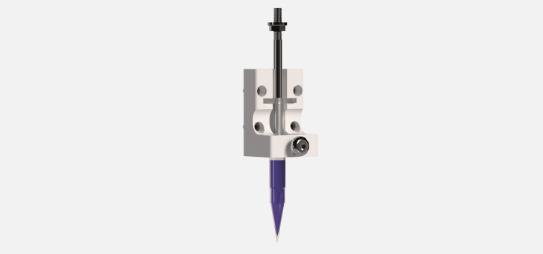
Several bioinks and materials extrusión with a wide viscosities ranges. The extrusión diameter will be determined by the used needle or pipette.
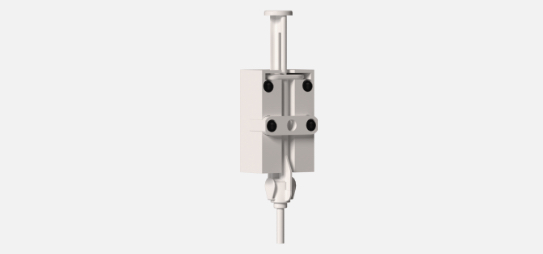
Simultaneous two blended material extrusión for producing homogeneous compose.
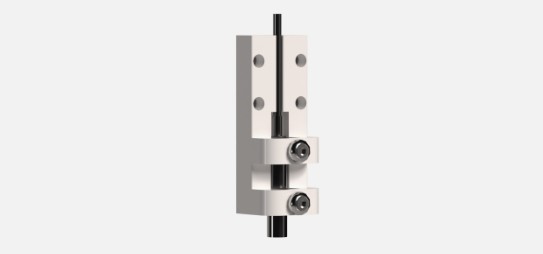
Ultra violet light font with direct incidence over the extruded material with automatic or manual control.
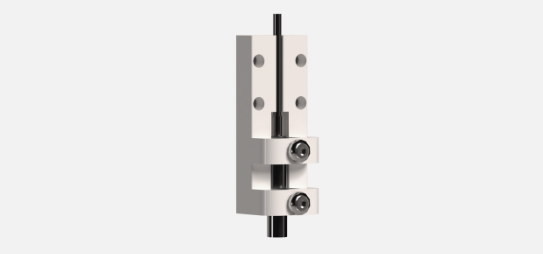
Infrared Font with direct incidence over the extruded material with automatic or manual control.
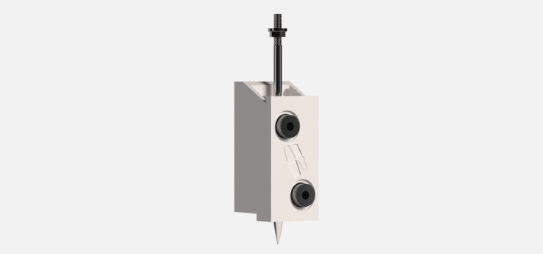
Uniform heating or cooling system in the whole surface to mantain a stable temperatura. Temperature drop in the material through a heat exchanger -20 to 100ºC.
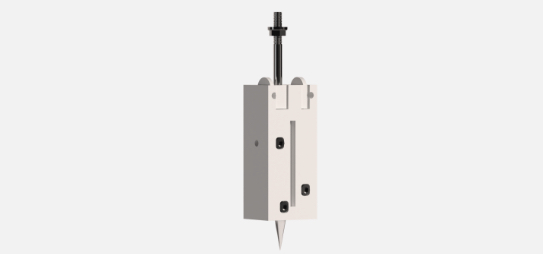
Uniform heating system on the whole surface to maintain a stable temperature. 0 to 50ºC (Customizable until 250ºC)
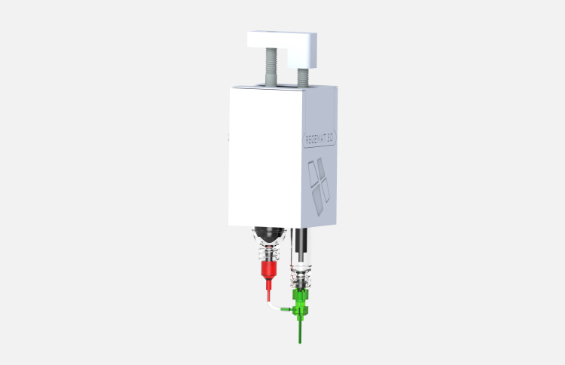
A coaxial printhead is made up of two syringes ideal for research purposes and can be used to simultaneously print up two different types of biomaterials. It is employed to create constructs which core and shell are made of different materials.
Possibilities of expanding to heated core -shell printhead.
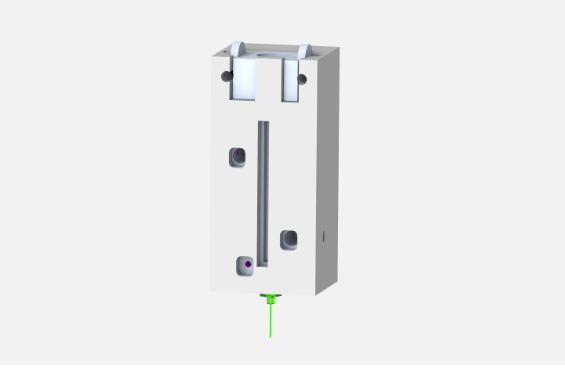
Interchangeable printing head. Heating thanks to the electrical system and uniform heat distribution with electronic control of the created filament. This metallic syringe and this special module has been specially designed for working at high temperatures until 250ºC.
The implementation of manual or automatic calibration (depending on the model) in the X, Y and Z axis and the independent movement in the Z axis in the case of the printing head in the Reg4Life model, allows controlling the material outlet heigh for achieving to print in several surfaces.
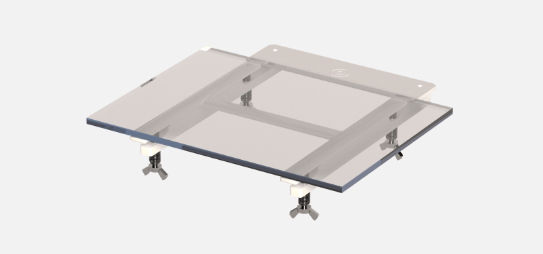
Glass Surface.
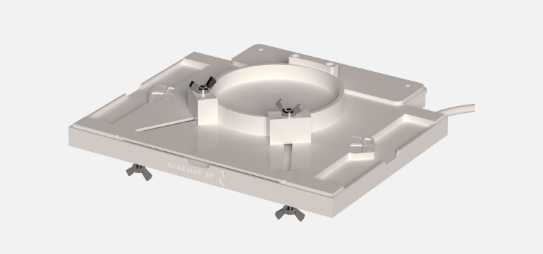
Adaptor for printing in Petri dish.
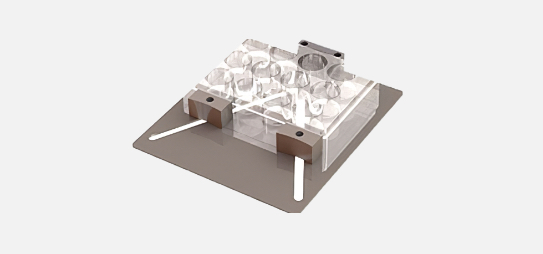
Adapter for printing on multiwell plates
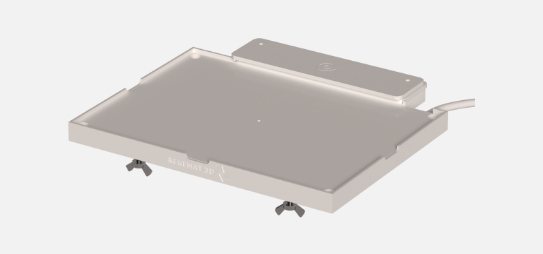
Specific surface for temperatura controlling (Until 120ºC)
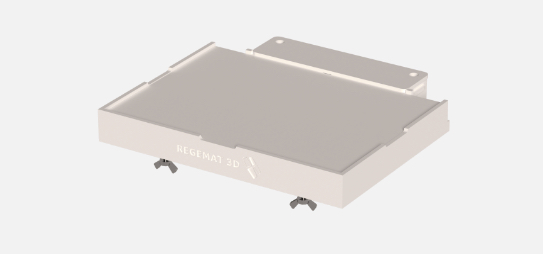
Specifiq Surface for temperatura controlling (range from -20 to 100ºC).
Regemat
Hi!! Can we help you? We Will be glad of helping you in your projects. Talk to us!.
